This summer marked the fortieth anniversary of Eastern Edge Gallery, Newfoundland’s only artist-run centre and the site of some of the wildest and most boldly political art exhibited in Newfoundland since the early 1980s. In preparation for celebrations, which took place in St. John’s in August, the gallery staff dug into their archives, hosted story-sharing circles, and put out a call for photographs to create a floor-to-ceiling mural commemorating four decades of rich and raunchy history.
In response to the call, the gallery’s executive director Ashley Hemmings received photos of past exhibitions as well as lots of wacky fundraisers and parties held in the gallery over the years, including a New Year’s Eve party featuring a “rage room” where a portion of the gallery was sectioned off with tarps so people could smash dishes while local band Vampires of Love played a live set in their underwear. There was also a birdhouse-building competition and a strip spelling bee.
For Hemmings, it’s been reassuring to see that playfulness has always been a part of Eastern Edge’s identity. Hemmings thinks of the gallery as a community space first and a gallery second. It’s important to the staff that the gallery feel welcoming as opposed to cultivating the kind of austere and intimidating environment often associated with contemporary art.
One of Hemmings’s favourite Eastern Edge exhibitions was A Hole So Big It Became The Sky by Coco Guzman and Daze Jefferies installed in 2019. Interested in LGBTQ2S histories of Newfoundland and Labrador, the artists hosted story-sharing circles where community members were invited to talk about their experiences of being two-spirit, queer, and/or trans in the isolated province. Guzman then painted a mural on the gallery wall that represented moments from these stories with big splashes of colour. For the duration of the exhibition, paint, markers, and pencils were made available to visitors, who were encouraged to add to the work. The messages, illustrations, and maps scrawled by visitors became a part of Guzman’s piece. By the end of the exhibition, the mural covered most of the gallery, even creeping its way up the support beam in the centre of the large room—a multimedia recording of a geographically isolated and very particular queer history. In terms of both the content and the methodology, this work invited viewers to see their own stories and experiment with representing them artistically as a way of sharing an otherwise largely invisible history.
“Because we’re not a commercial space, there’s more room for experimentation in people’s practice. It’s not about producing multiples of the same thing or producing a kind of art that’s marketable,” says Hemmings. “For example, the project we have in the main gallery right now, Alive Matter by Nadine Baldow, is one huge sculpture made of washed up driftwood and fishing nets.
“You’d never be able to sell it; it would never fit in anyone’s house, and it smells bad. We want to make space for that kind of experimentation.”
According to environmental artist Marlene Creates, who joined the gallery a year after its inception, a focus on the importance of experimentation and an anti-capitalist framework has been at the centre of the gallery’s ethos since the early days.
When Creates joined a fledgling Eastern Edge in 1985, it was running out of the bar and rehearsal space in the LSPU Hall theatre. The gallery worked around the theatre’s schedule, primarily showing work that could be hung on a wall and sold.
Before moving to Newfoundland, Creates had been a part of SAW Gallery in Ottawa, which opened in the ’70s during a period when artist-run centres were popping up across the country in response to new funding made available by the federal government. Artist-run centres were required to provide an artist fee for exhibitions whether anything sold or not, making it possible for artists to get paid for work that might not be commercially viable. During her time at SAW, Creates saw how this practice made it possible to see and be inspired by the work of people who didn’t have a following, as well as people who worked in ephemeral or experimental mediums.
Fuelled by a desire to show more experimental and three-dimensional work, as well as to have more autonomy over the space, Eastern Edge’s board voted to move to a new location shortly after Creates joined. A group of women artists used their own money to rent a former tobacco factory on Flavin Street, which they began transforming into a gallery space. In the beginning, Creates hand-wrote all the gallery’s correspondence on carbon-copied paper, until eventually someone generously donated an electric typewriter.
After a brief stint in the tobacco factory, the gallery secured a new location on Harbour Drive and lugged the prized typewriter over. Once the mushrooms blooming in the cracks in the floor were removed, the gallery opened its doors to the public and began a long legacy of showing powerful work by emerging and established, local and visiting artists. Eastern Edge also hosted overnight art-making marathons, film screenings, book launches, and dance parties in that same location.
In 2019, the gallery expanded into a new portion of the Harbour Drive building and created studio spaces. Joshua Vettivelu’s Surface Tension (or What Holds an “Us” Together), an installation made from forty tons of sculpted sand, was the first work created and exhibited in the studio space. Vettivelu’s piece was a reflection on the reception of different groups of Sri Lanken refugees to Canada, the first being the arrival of 152 people in two lifeboats off the coast of Newfoundland in 1982. These migrants were able to relocate and seek employment while their refugee claims were processed. This starkly contrasts the unjust treatment of a wave of Sri Lanken refugees who arrived by cargo ship off of British Columbia in the early 2000s and were detained, some for more than a year. Vettivelu was interested in what the variation in the treatment of these migrants revealed about how Canadian immigration policy and national identity had shifted in the past forty years.
Over the course of five months, Vettivelu worked on this project in the gallery’s studio space. During that time he conducted research, built a wooden boat frame that replicated the lifeboats that arrived off the coast of Newfoundland in the ’80s, sourced forty tons of sand, and sculpted it to hold the shape of the frame. By rebuilding the lifeboats in sand, Vettivelu symbolized the precarious safety that was granted to immigrants who arrived in Newfoundland in the ’80s, as well as the ongoing erosion of immigration laws that fail to guarantee basic human rights to new arrivals.
The fact that Surface Tension (or What Holds an “Us” Together) would crumble if it were moved is integral to the message of the piece. A Hole So Big It Became The Sky could only come into being in a space where the public was made to feel comfortable passing through and leaving a piece of themselves behind. These site-specific works are a couple of countless exhibitions in Eastern Edge’s history that demonstrate the value of work that cannot be bought or sold. Spaces like Eastern Edge Gallery are essential for allowing art to continue to grow in new and unexpected directions as well as for allowing art to respond to unjust political realities. To say nothing of the importance of having a venue to host the next strip spelling bee.

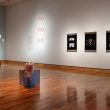
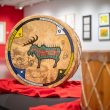





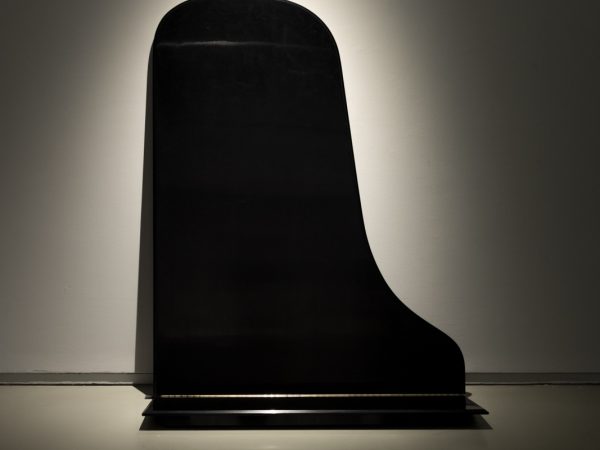



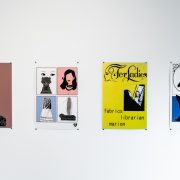
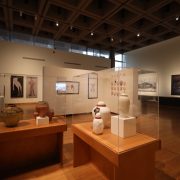


Leave a Reply